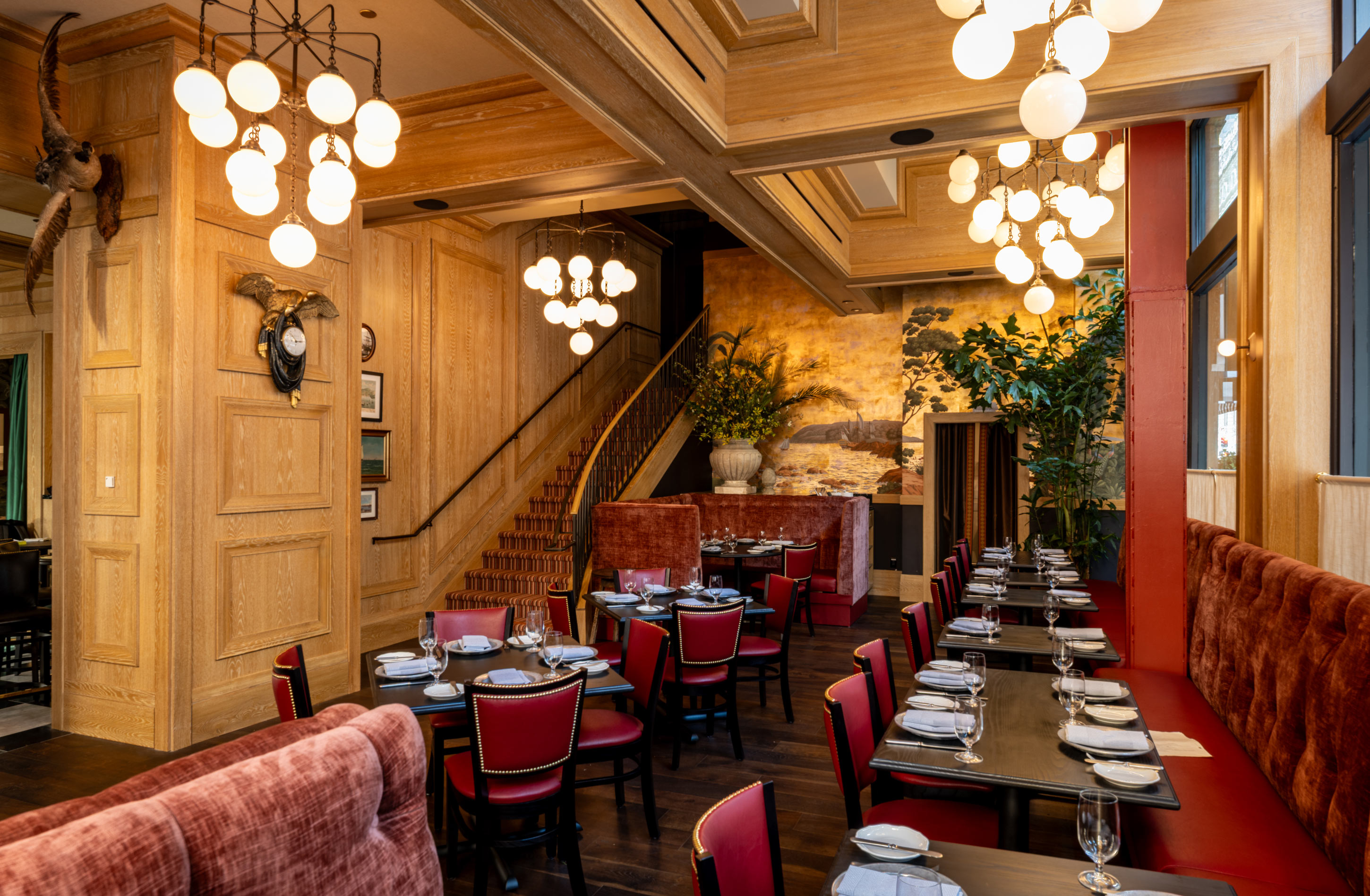
If you're running a small restaurant with fewer than 50 seats, you've probably felt the sting of missed calls during dinner rush. Every unanswered phone call represents lost revenue—whether it's a reservation request, takeout order, or catering inquiry. The good news? AI phone answering systems are no longer just for enterprise chains. In 2025, even micro-venues can access sophisticated AI solutions that deliver remarkable returns on investment.
Recent industry analysis shows that voice AI can provide restaurants with a 760% annual ROI by reducing staff labor costs and capturing up to 30% of missed calls (SoundHound). For small restaurants, this technology represents a game-changing opportunity to compete with larger establishments while maintaining the personal touch that defines great hospitality.
This comprehensive guide breaks down the real costs of AI phone answering systems, from budget-friendly SaaS options starting at $100/month to premium per-minute models. We'll show you exactly how to calculate your ROI, provide actionable worksheets, and demonstrate why most small restaurants see payback within 3-6 months—even with limited seating capacity.
AI phone answering systems for restaurants typically fall into three pricing categories, each designed for different operational needs and budgets:
| Pricing Model | Cost Range | Best For | Key Features |
|---|---|---|---|
| SaaS Monthly | $100-$300/month | Consistent call volume | Unlimited calls, basic integrations |
| Per-Minute | $0.10-$0.50/minute | Variable call patterns | Pay-as-you-use, advanced features |
| Hybrid Plans | $199-$500/month | Growing restaurants | Base fee + overage charges |
For restaurants just starting their AI journey, basic SaaS solutions offer essential phone answering capabilities. These systems typically handle simple reservation requests, basic order taking, and frequently asked questions about hours and location. My AI Front Desk represents this category, acting as a 24/7 phone receptionist for businesses, handling calls, scheduling appointments, and answering questions (My AI Front Desk vs Loman AI).
These entry-level systems can send texts and schedule appointments during conversations, using custom links for different types of bookings. Creating and updating the AI receptionist is simple and quick, taking just five minutes to set up (My AI Front Desk vs Loman AI).
Purpose-built restaurant AI systems like HostieAI offer more sophisticated capabilities tailored specifically for food service operations. HostieAI starts at $199 a month and provides automated 24/7 call answering, multi-channel management, real-time language translation, reservation management, and order management (Hostie AI Features).
What sets restaurant-specific AI apart is its deep integration with existing systems. HostieAI integrates directly with the tools you're already using—existing reservation systems, POS systems, and even event planning software (Hostie AI Introduction). This seamless integration means your AI can handle complex requests from simple reservation changes to complicated order modifications (Hostie AI Introduction).
High-end solutions offer advanced features like multi-location management, detailed analytics, custom integrations, and white-label options. These systems often include dedicated account management and custom training for unique menu items or service protocols.
The headline-grabbing 760% annual ROI figure comes from comprehensive analysis of voice AI implementation in restaurant environments. The calculation is based on a voice AI solution that augments a labor resource at a premium annual fee of $5,998, compared to an annual labor cost of $45,724 (SoundHound).
For small restaurants, this translates to significant operational benefits:
Let's break down realistic ROI calculations for a 30-seat restaurant:
Monthly Costs:
Monthly Benefits:
ROI Calculation:
(Annual Benefit - Annual Cost) ÷ Annual Cost × 100
($11,700 - $2,588) ÷ $2,588 × 100 = 352% ROI
Even with conservative estimates, small restaurants can achieve substantial returns that justify the investment within the first quarter.
HostieAI was created by a restaurant owner and an AI engineer, Brendan Wood, specifically to address the challenges faced by small to medium-sized restaurants (Hostie AI Introduction). What originally started as a solution to help reduce the tension at Back to Back has quickly grown into something much bigger (Hostie AI Introduction).
After integrating HostieAI with partner establishments such as Flour + Water and Slanted Door, it now handles over 80% of their guest communications automatically (Hostie AI Features). Teams have reported growing customer satisfaction in the dining experience and customer service after using HostieAI (Hostie AI Features).
Artificial intelligence is making significant inroads into restaurant front-of-house operations. Companies like Newo.ai, Slang, RestoHost, Hostie, Revmo, and PolyAI are not just managing bookings; they are engaging in natural conversations, handling multiple languages, and showcasing soft skills previously thought to be exclusive to humans (Forbes AI Transformation).
The financial impact is substantial: AI hosts are generating an additional revenue of $3,000 to $18,000 per month per location, up to 25 times the cost of the AI host itself (Forbes AI Transformation). This data suggests that even conservative implementations can deliver significant returns for small restaurants.
Labor Costs:
Missed Call Revenue:
Order Errors and Comps:
Revenue Capture:
Labor Savings:
Accuracy Improvements:
Total Monthly Benefits: $___
AI System Monthly Cost: $___
Net Monthly Benefit: $___
Payback Period (months): ___
Annual ROI: ___%
Smaller establishments typically benefit from straightforward SaaS solutions that handle basic phone functions without overwhelming complexity. Key features to prioritize:
HostieAI's multilingual capabilities are particularly valuable, as the AI can fluently speak 20 languages, catering to both tourists and locals (Hostie AI Platform). This feature addresses a critical challenge in hospitality, where 75% of customers prefer support in their native language, and businesses lose 29% of customers due to lack of multilingual support (AI Language Translation).
Mid-sized small restaurants can leverage more sophisticated features that justify higher monthly costs:
Larger small restaurants approaching the 50-seat threshold can benefit from premium features:
Week 1-2: System Selection and Purchase
Week 3-4: Configuration and Training
Performance Monitoring:
ROI Measurement:
Advanced Feature Activation:
Many small restaurant owners worry about the complexity of integrating AI systems with existing technology. However, modern solutions are designed for simplicity. HostieAI integrates directly with major reservation systems and leading POS systems, enabling 24/7 management of bookings and orders (Hostie AI Platform).
The integration process typically involves:
Some restaurant staff may initially resist AI implementation, fearing job displacement. However, successful implementations focus on augmentation rather than replacement. AI systems handle routine calls, allowing staff to focus on higher-value activities like customer service and food preparation.
Effective change management includes:
Customer acceptance of AI phone systems has improved dramatically as the technology has become more sophisticated. Modern AI systems engage in natural conversations, handle multiple languages, and showcase soft skills previously thought to be exclusive to humans (Forbes AI Transformation).
Key factors for customer acceptance:
When presenting the AI phone system investment to partners, investors, or stakeholders, focus on concrete financial benefits:
Revenue Protection:
Cost Reduction:
Competitive Advantage:
Monthly Subscription Benefits:
ROI-Based Justification:
Modern AI systems extend beyond phone calls to handle texts, emails, and even social media inquiries. HostieAI automates handling calls, texts, and emails, managing reservations and takeout orders across all channels (Hostie AI Introduction).
This comprehensive approach ensures:
For restaurants in diverse communities or tourist areas, multilingual support can significantly expand the customer base. Language barriers and cultural nuances are significant challenges in hospitality, affecting communication, guest satisfaction, and business growth (Hospitality Language Barriers).
Delayed responses and misunderstandings due to language barriers can lead to lost bookings and guest dissatisfaction (Hospitality Language Barriers). AI translation can save businesses billions annually, reduce response times, boost customer satisfaction, and support over 200 languages, including rare ones (AI Language Translation).
Sophisticated AI systems provide valuable business intelligence:
The restaurant industry is experiencing rapid AI adoption. Artificial Intelligence is transforming the restaurant industry, enhancing both customer service and back-of-house operations (Restaurant AI Revolution). AI-powered systems can understand various accents and dialects, process orders accurately, and upsell menu items based on customer preferences, leading to faster service, reduced wait times, and a more personalized experience (Restaurant AI Revolution).
Industry experts predict that in just a couple of years, there will hardly be any business that hasn't hired an AI employee (Forbes AI Transformation). This suggests that early adopters will have a significant competitive advantage.
When choosing an AI system, consider your restaurant's growth plans:
Look for AI systems that can integrate with emerging restaurant technologies:
For small restaurants with fewer than 50 seats, AI phone answering systems represent one of the most accessible and impactful technology investments available in 2025. With entry-level solutions starting at just $100/month and restaurant-specific platforms like HostieAI at $199/month, the barrier to entry has never been lower.
The financial case is compelling: even conservative estimates show ROI of 300-400% within the first year, with many restaurants achieving the 760% returns demonstrated in industry studies (SoundHound). More importantly, these systems address fundamental operational challenges that every small restaurant faces—missed calls, overwhelmed staff during peak hours, and the need for consistent customer service.
The key to success lies in choosing the right solution for your specific needs and implementing it thoughtfully. HostieAI's approach of being designed for restaurants, made by restaurants, ensures that the system understands the unique challenges of food service operations (Hostie AI Introduction). The platform's ability to handle complex requests from simple reservation changes to complicated order modifications makes it particularly well-suited for small restaurants that need flexibility without complexity (Hostie AI Introduction).
As the restaurant industry continues to evolve, AI phone answering systems will become as essential as POS systems and reservation platforms. Small restaurants that invest now will not only see immediate returns but will also position themselves for long-term success in an increasingly competitive market. The question isn't whether you can afford to implement AI phone answering—it's whether you can afford not to.
Start with a clear assessment of your current phone-related costs and missed opportunities. Use the worksheets provided to calculate your potential ROI, and don't hesitate to take advantage of free trials to test systems before committing. With payback periods of just 3-6 months and ongoing benefits that compound over time, AI phone answering represents one of the smartest investments a small restaurant can make in 2025.
AI phone answering systems for small restaurants range from $100-300/month for basic SaaS solutions to $500+ for premium options. The most cost-effective solutions like My AI Front Desk start around $100/month, while specialized restaurant platforms like Hostie offer comprehensive features at competitive rates. Premium solutions may cost $5,998+ annually but can deliver 760% ROI through labor cost savings and increased revenue capture.
Small restaurants achieve 700%+ ROI by capturing missed calls (up to 30% of total calls), reducing labor costs, and increasing order volume. With average annual labor costs of $45,724 per employee, an AI system costing $5,998 annually can provide 760% ROI by handling calls during peak hours. Additional revenue comes from 24/7 availability, upselling capabilities, and improved customer satisfaction leading to repeat business.
Small restaurants should prioritize multilingual support (20+ languages), POS integration, reservation management, and order-taking capabilities. Essential features include 24/7 availability, appointment scheduling, text messaging, and the ability to handle multiple accents and dialects. Platforms like Hostie offer restaurant-specific AI that integrates directly with major reservation systems and POS platforms for seamless operations.
Most small restaurants see positive returns within 3-6 months of implementing AI phone answering systems. The immediate benefits include capturing previously missed calls, reducing staff workload during peak hours, and providing 24/7 customer service. Revenue increases typically become apparent within the first month, while labor cost savings accumulate over time to deliver the full 700%+ ROI within the first year.
Modern AI phone systems are specifically designed for restaurant operations and can handle complex orders, modifications, and reservation requests with high accuracy. They use Natural Language Processing to understand context, process orders correctly, and even upsell menu items based on customer preferences. Systems like Hostie's AI "Jasmine" are built by restaurant professionals and trained specifically for hospitality scenarios, ensuring industry-relevant responses.
Hidden costs may include setup fees, integration costs with existing POS systems, staff training time, and potential phone system upgrades. However, most modern AI solutions offer quick 5-minute setup processes and seamless integrations. The key is choosing a restaurant-specific platform that minimizes technical complexity and provides comprehensive support to avoid unexpected implementation costs that could impact ROI calculations.
RELATED


